The Psychological Aspect of Self-Defense Techniques
Self-defense is often perceived as a purely physical endeavor, where techniques and strength dominate the conversation. However, diving deeper into the realm of self-defense reveals a profound psychological aspect that is just as critical, if not more so. The mental and emotional dimensions of self-defense play a significant role in how individuals prepare for and respond to potential threats. Understanding these psychological factors can make the difference between a successful defense and a regrettable outcome. It’s not merely about knowing how to throw a punch; it’s about being mentally equipped to handle the unexpected.
Imagine walking down a dimly lit street and suddenly feeling the hairs on the back of your neck stand up. That instinctive reaction is your body’s way of alerting you to danger. But what happens next? Do you freeze, flee, or fight? This decision-making process is heavily influenced by your mental preparedness. If you’ve trained your mind to stay calm and assess the situation, you’re far more likely to react effectively. On the other hand, if panic sets in, your body might betray you, leaving you vulnerable to harm. This is why it’s essential to cultivate a strong mental framework alongside physical training.
Moreover, the psychological aspect of self-defense extends to how we perceive fear. Fear is a natural response to potential threats, but it can also cloud our judgment and lead to poor decision-making. When faced with a confrontation, do you let fear take control, or do you harness it to fuel your response? This dichotomy is a crucial element in self-defense training. By learning to manage and channel fear, individuals can enhance their reactions, allowing them to respond rather than react impulsively.
In the following sections, we will explore various techniques for mental preparedness, coping strategies for fear, and the role of training in achieving psychological readiness. By addressing these components, we aim to provide a comprehensive understanding of how the mind influences self-defense and how individuals can better prepare themselves for any situation.
Mental preparedness is not just a buzzword; it’s a fundamental aspect of effective self-defense. When individuals are mentally prepared, they are more likely to remain calm and collected in high-pressure situations. This section will delve into techniques that can enhance mental resilience, enabling individuals to face potential threats with confidence. Techniques such as visualization, breathing exercises, and scenario training can significantly improve one’s ability to respond under duress. By fostering a mindset that anticipates challenges, individuals can transform fear into a powerful ally rather than a debilitating foe.
Fear is an inevitable part of life, especially when it comes to self-defense. It can trigger a fight-or-flight response, which is crucial for survival. However, this same fear can lead to paralysis in decision-making, causing individuals to freeze when they should be acting. Understanding how fear influences our choices is essential for anyone looking to improve their self-defense capabilities. In this section, we will explore the intricate relationship between fear and decision-making, emphasizing the importance of managing fear to enhance reactions during critical moments.
Managing fear is not about eliminating it; rather, it’s about learning to cope with it effectively. There are several strategies that can help individuals navigate their fear responses. Techniques such as breathing exercises can calm the mind and body, allowing for clearer thinking. Visualization is another powerful tool; by picturing oneself successfully handling a confrontation, individuals can build confidence and reduce anxiety. In this section, we will outline various coping strategies that can be integrated into self-defense training, empowering individuals to face their fears head-on.
Mindfulness is a practice that encourages individuals to stay present and aware of their surroundings. In the context of self-defense, mindfulness can significantly enhance awareness and focus. By incorporating mindfulness techniques into training, individuals can learn to remain calm and make informed decisions during confrontations. This subsection will explore how mindfulness can be a game-changer, allowing individuals to respond thoughtfully rather than react impulsively.
Visualization is not just for athletes; it’s a powerful technique for anyone looking to improve their performance in self-defense situations. By envisioning successful outcomes, individuals can boost their confidence and prepare mentally for potential confrontations. This part will discuss how positive visualization can create a mental blueprint for success, helping individuals to internalize the skills they need to defend themselves effectively.
Training is essential for building physical skills, but it also plays a crucial role in enhancing psychological readiness. Realistic training scenarios can prepare individuals mentally for self-defense situations, allowing them to experience the stress and pressure of a confrontation in a controlled environment. This section will highlight the importance of integrating psychological elements into training, ensuring that individuals are not only physically capable but also mentally prepared for any challenge they may face.
Stress can be a significant barrier to effective self-defense. When the body is under stress, both physical and mental capabilities can diminish, often leading to poor performance. Understanding how stress affects our reactions is vital for anyone involved in self-defense. In this section, we will analyze the impact of stress on performance and discuss strategies for managing stress effectively to improve outcomes during confrontations.
Implementing stress management techniques can dramatically enhance self-defense performance. Techniques such as progressive muscle relaxation, mindfulness meditation, and controlled breathing can help individuals reduce stress levels and improve focus during critical moments. This subsection will provide practical methods that can be easily integrated into self-defense training, enabling individuals to stay calm and composed when it matters most.
Scenario-based training is an effective method for simulating real-life stressors, preparing individuals for actual confrontations. By engaging in realistic scenarios, individuals can practice their skills in a safe environment, allowing them to develop both physical and psychological responses to stress. This section will discuss the effectiveness of scenario-based training in improving self-defense skills and enhancing psychological readiness.
- What is the most important aspect of self-defense? While physical skills are important, mental preparedness and the ability to manage fear are crucial for effective self-defense.
- How can I improve my mental preparedness for self-defense? Techniques such as visualization, mindfulness, and scenario-based training can significantly enhance mental readiness.
- Can fear be beneficial in self-defense situations? Yes, fear can heighten awareness and prompt action; however, managing it effectively is key to making sound decisions.
- What role does stress play in self-defense performance? Stress can impair both physical and mental capabilities, making it essential to implement stress management techniques during training.
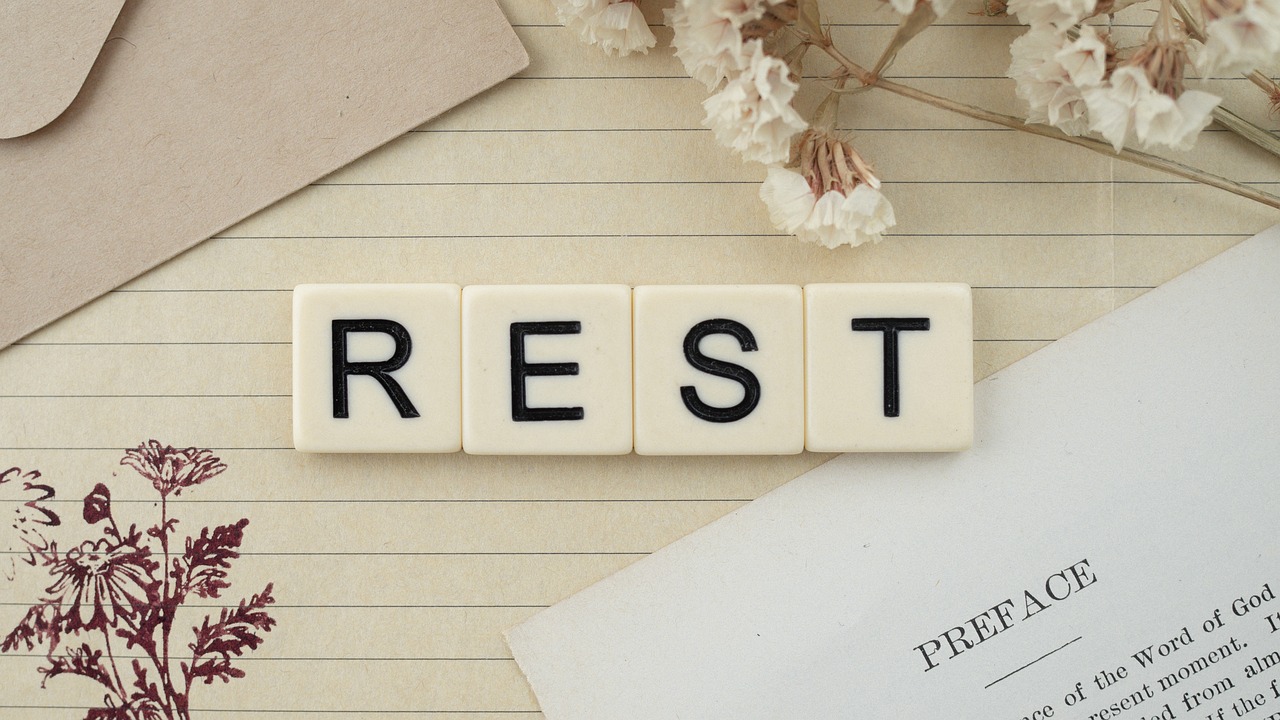
The Importance of Mental Preparedness
This article explores the mental and emotional dimensions of self-defense, highlighting how psychological factors influence personal safety, training, and response during confrontations. Understanding these aspects is crucial for effective self-defense.
Mental preparedness is not just a buzzword; it's a crucial element in the realm of self-defense. When faced with a potential threat, how you think can be just as important as how you act. Imagine you're walking down a dimly lit street and suddenly sense someone following you. Your heart races, your palms sweat, and in that moment, your mind becomes your greatest ally or your worst enemy. Being mentally prepared means having the skills to manage those racing thoughts and emotions effectively.
To enhance mental resilience, individuals can employ several techniques that prepare them for high-pressure situations. These techniques include:
- Visualization: Envisioning yourself successfully navigating a confrontation can mentally prepare you for the real thing.
- Breathing Exercises: Deep, controlled breathing can help calm your nerves and clear your mind.
- Scenario Rehearsal: Practicing various confrontation scenarios can build familiarity and reduce anxiety when the real situation arises.
By incorporating these practices into your routine, you create a mental framework that allows you to react more effectively during confrontations. The goal is to condition your mind to respond positively, even when adrenaline kicks in. Think of it like training for a marathon; you don’t just show up on race day without preparation. You train your body and mind to endure the challenge ahead.
Furthermore, mental preparedness can also involve understanding your own limits and triggers. Recognizing what situations might escalate your anxiety can help you develop personalized strategies to manage those feelings. This self-awareness is key to fostering a proactive approach to self-defense. When you know what affects you, you can take steps to mitigate those influences, allowing you to maintain a calm demeanor even in the face of danger.
Ultimately, the importance of mental preparedness in self-defense cannot be overstated. It's about building a mindset that empowers you to act decisively and effectively when it matters most. Just like a soldier prepares for battle, individuals must equip themselves with the mental tools necessary to navigate potentially dangerous situations. Remember, in self-defense, your mind is just as powerful as your physical abilities.
| Question | Answer |
|---|---|
| What is mental preparedness in self-defense? | Mental preparedness involves training your mind to respond effectively to threats and manage stress and fear during confrontations. |
| How can I improve my mental preparedness? | You can improve it through visualization, breathing exercises, and scenario rehearsals that help you practice your responses to potential threats. |
| Why is fear important in self-defense? | Fear can influence your decision-making in critical moments. Managing fear allows you to make better choices under pressure. |
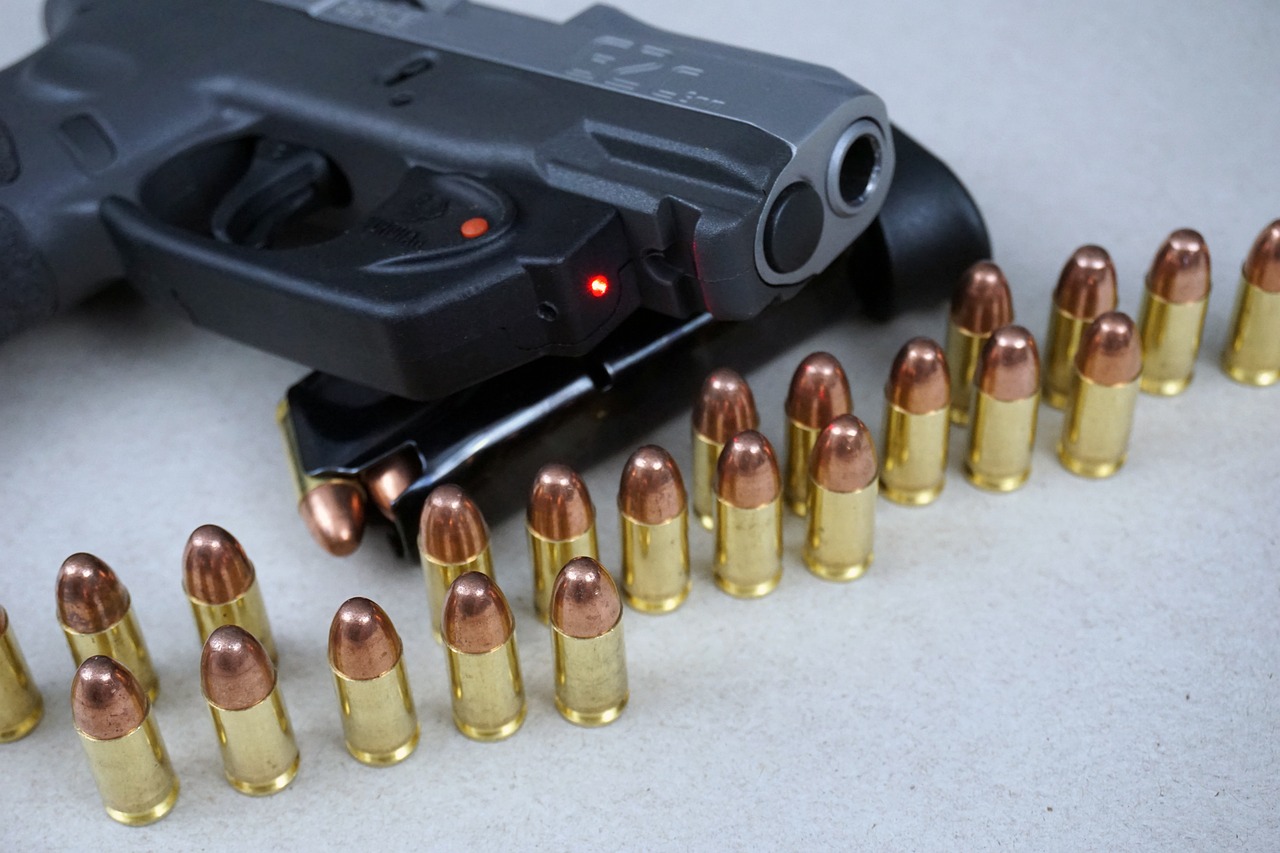
Fear is a primal emotion that can profoundly influence our decision-making processes, especially in high-stress situations like self-defense. When faced with a potential threat, our bodies go into a state of heightened alertness, often referred to as the "fight or flight" response. This physiological reaction is essential for survival, but it can also cloud our judgment and lead to hasty decisions. Have you ever noticed how time seems to slow down during a scary moment? That’s your brain working overtime, processing all the information it can to help you decide your next move.
In the context of self-defense, fear can manifest in various ways. Some individuals may freeze, unable to act, while others might react impulsively, possibly escalating the situation. It's crucial to recognize that fear isn't inherently bad; it can serve as a warning signal. However, managing that fear is key to making rational decisions. For instance, if you find yourself in a confrontation, your ability to maintain composure can mean the difference between effectively defending yourself and becoming overwhelmed.
Understanding the dual nature of fear is essential. On one hand, it heightens our senses and prepares us for action. On the other, it can lead to poor choices if not properly managed. A well-known study conducted by psychologists explored how fear impacts decision-making by simulating various stressful scenarios. Participants were observed to either overreact or underreact based on their fear levels, highlighting the importance of emotional regulation. Here’s a simplified breakdown of the findings:
| Fear Level | Reaction Type | Outcome |
|---|---|---|
| High | Impulsive | Escalated Conflict |
| Moderate | Thoughtful | Effective Defense |
| Low | Frozen | Missed Opportunity |
As you can see, the level of fear directly correlates with the type of reaction and its subsequent outcome. Therefore, learning to manage fear is a vital skill for anyone interested in self-defense. Techniques such as controlled breathing and grounding exercises can help mitigate fear responses, allowing for clearer thinking and better decision-making during confrontations.
In a nutshell, fear is a double-edged sword in self-defense scenarios. It can either propel you to safety or hinder your ability to react appropriately. The key lies in understanding your fear and employing strategies to manage it effectively. By doing so, you can transform fear from a stumbling block into a stepping stone, enabling you to respond with confidence and clarity when it matters most.
- How can I train myself to manage fear in self-defense situations?
Practicing mindfulness, controlled breathing, and scenario-based training can significantly enhance your ability to manage fear. - What are some signs that fear is affecting my decision-making?
Common signs include feeling paralyzed, overreacting, or making impulsive choices without considering the consequences. - Can fear ever be beneficial in a self-defense context?
Absolutely! Fear can heighten your awareness and prepare you for action, but it’s crucial to learn how to channel it effectively.
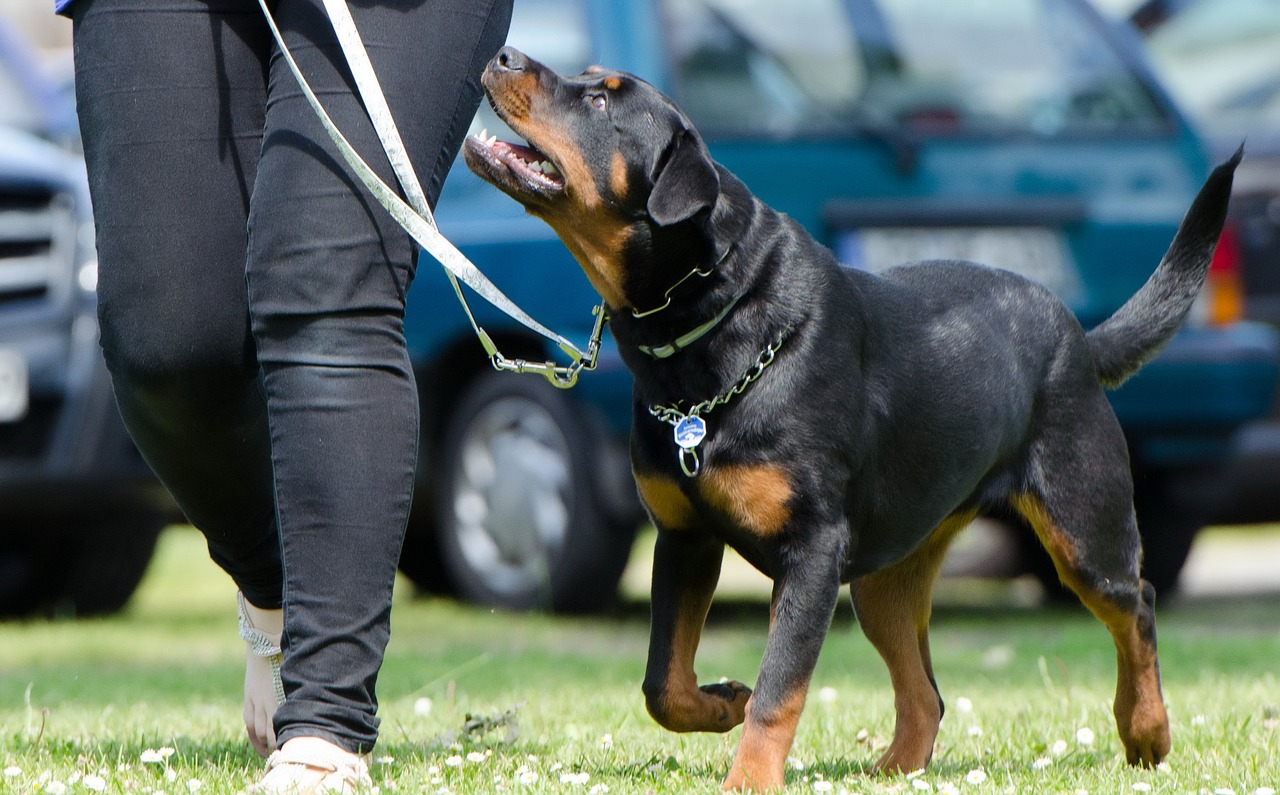
When it comes to self-defense, fear can feel like a heavy weight on your shoulders, pulling you down when you need to be at your best. It's a natural response, but the good news is that there are effective coping strategies that can help you manage that fear and transform it into a tool for survival. Imagine fear as a wild horse; if you learn to ride it instead of letting it run wild, you can navigate through dangerous situations with confidence and clarity.
One of the first strategies to consider is breathing exercises. It might sound simple, but taking deep, controlled breaths can significantly lower anxiety levels. When you're faced with a threatening situation, your body goes into fight-or-flight mode, and your breathing often becomes shallow. By focusing on your breath, you can calm your mind and body, allowing for clearer thinking. Try inhaling slowly through your nose for a count of four, holding for four, and then exhaling through your mouth for a count of four. Repeat this several times, and you'll likely find your heart rate stabilizing and your mind clearing.
Another powerful technique is visualization. Picture yourself in a self-defense scenario—how would you react? Visualizing yourself successfully handling a confrontation can create a mental blueprint for your brain to follow when the time comes. This isn't just daydreaming; it's about creating a vivid, detailed image of yourself acting confidently and effectively. You can even set aside a few minutes each day to practice this mental rehearsal, which can significantly boost your confidence and readiness.
In addition to these techniques, incorporating mindfulness practices into your routine can enhance your ability to stay present during high-stress situations. Mindfulness is all about focusing on the here and now, which can prevent your mind from spiraling into panic. Consider engaging in mindfulness meditation or simply taking a few moments each day to observe your surroundings without judgment. This practice can train your brain to stay calm and collected, even when chaos surrounds you.
Lastly, don't underestimate the power of support systems. Sharing your fears with trusted friends or family can alleviate some of the burdens and provide you with new perspectives. They might offer insights or strategies that you hadn’t considered, making you feel less alone in your journey to overcome fear. Remember, you're not just training your body; you're also training your mind, and having a support network can make all the difference.
In summary, coping with fear in self-defense situations is about equipping yourself with the right tools. By practicing breathing exercises, visualization techniques, mindfulness, and relying on your support network, you can transform fear from an enemy into an ally. Just like a skilled martial artist who learns to harness their energy, you too can learn to channel your fear into focused action when it matters most.

In the realm of self-defense, mindfulness techniques serve as a powerful tool to enhance awareness and decision-making during potentially dangerous situations. Imagine being in a high-stakes scenario where your heart races, and your mind is clouded with panic. This is where mindfulness steps in, helping you to regain control and focus. By practicing mindfulness, individuals can train their minds to remain present, reducing the overwhelming influence of fear and anxiety.
One effective way to cultivate mindfulness is through breathing exercises. These exercises encourage individuals to concentrate on their breath, creating a sense of calm amidst chaos. For instance, taking deep, slow breaths can lower heart rates and provide clarity in stressful moments. A simple technique involves inhaling deeply through the nose for a count of four, holding the breath for four, and exhaling slowly through the mouth for another count of four. This rhythmic breathing not only centers the mind but also prepares the body for action.
Another technique is body scanning, where individuals mentally check in with different parts of their body, noticing any tension or discomfort. This practice enhances body awareness, allowing one to recognize physical signals of stress before they escalate. By acknowledging these sensations, individuals can employ relaxation techniques to release tension, thereby improving their overall readiness to respond in a self-defense situation.
Moreover, incorporating visualization into mindfulness practices can be incredibly beneficial. By picturing oneself successfully navigating a confrontation, individuals can build confidence and reduce anxiety. This mental rehearsal creates a sense of familiarity with potential scenarios, making it easier to react effectively when faced with real-life threats. Imagine standing confidently in front of an attacker, visualizing every move you’ll make, and feeling empowered by the knowledge that you are prepared.
To further illustrate the impact of mindfulness techniques, consider the following table that outlines the benefits of these practices in self-defense:
| Mindfulness Technique | Benefits |
|---|---|
| Breathing Exercises | Reduces anxiety, lowers heart rate, enhances focus |
| Body Scanning | Increases awareness of physical tension, promotes relaxation |
| Visualization | Boosts confidence, prepares for real-life scenarios, enhances performance |
In conclusion, adopting mindfulness techniques can significantly improve one's ability to handle self-defense situations. By training the mind to stay present and focused, individuals can transform their responses to threats, turning fear into empowerment. So, the next time you think about self-defense, remember that it’s not just about physical skills; it’s about cultivating a mindset that supports your safety and well-being.
- What is mindfulness in self-defense? Mindfulness in self-defense refers to the practice of being present and aware of one’s surroundings, which can help individuals make better decisions during confrontations.
- How can breathing exercises help in self-defense? Breathing exercises can help calm the mind and body, reducing anxiety and allowing for clearer thinking during stressful situations.
- Can visualization improve self-defense skills? Yes, visualization can enhance self-defense skills by mentally preparing individuals for potential scenarios, boosting their confidence and performance.

Positive visualization is a powerful mental technique that can significantly enhance an individual's confidence and performance in self-defense situations. Imagine standing in front of a mirror, picturing yourself executing a perfect defense move with grace and precision. This mental imagery isn't just daydreaming—it's a well-researched strategy that can prepare you for real-life confrontations. By envisioning successful outcomes, you create a mental blueprint that your brain can follow when the pressure is on.
When you practice positive visualization, you are essentially training your mind to respond effectively in high-stress situations. Think of it as a rehearsal for your brain. Just like an athlete visualizes their performance before a big game, you can visualize yourself handling a potential threat. This mental preparation helps reduce anxiety and increases your likelihood of reacting calmly and confidently when faced with danger. The more vividly you can imagine these scenarios, the more prepared you will feel.
To maximize the benefits of positive visualization, consider incorporating the following techniques into your practice:
- Set a Clear Intention: Before you begin, decide what specific situation you want to visualize. Whether it’s escaping an attacker or successfully defending yourself, clarity is key.
- Engage All Senses: Don’t just visualize what you see. Imagine the sounds, smells, and even the physical sensations. This multi-sensory approach makes the experience more real.
- Practice Regularly: Like any skill, the more you practice visualization, the better you will become. Set aside time each week to focus on this technique.
Additionally, you might want to create a visualization routine that includes deep breathing exercises to calm your mind and body before you start. This combination can enhance your ability to visualize effectively. When you pair positive visualization with physical training, you create a holistic approach to self-defense preparation. You're not just building muscle memory; you're also conditioning your mind to react positively and confidently.
In conclusion, positive visualization is not just about wishing for the best; it's about actively preparing yourself for success. By regularly practicing this technique, you can transform your mindset, reduce fear, and improve your overall performance in self-defense situations. So, the next time you think about self-defense training, remember that your mind is just as important as your body. Embrace the power of positive visualization and watch your confidence soar!
Q: How often should I practice positive visualization?
A: It's beneficial to practice positive visualization regularly, ideally several times a week. Consistency helps reinforce the mental images and prepares your mind for real-life situations.
Q: Can positive visualization help in other areas of life?
A: Absolutely! Positive visualization can enhance performance in various fields, including sports, public speaking, and even everyday challenges. It’s a versatile technique that can boost confidence and reduce anxiety.
Q: What if I struggle to visualize?
A: If visualization feels challenging, start small. Focus on simple scenarios and gradually build to more complex situations. You can also use guided imagery resources or apps to assist you in the process.
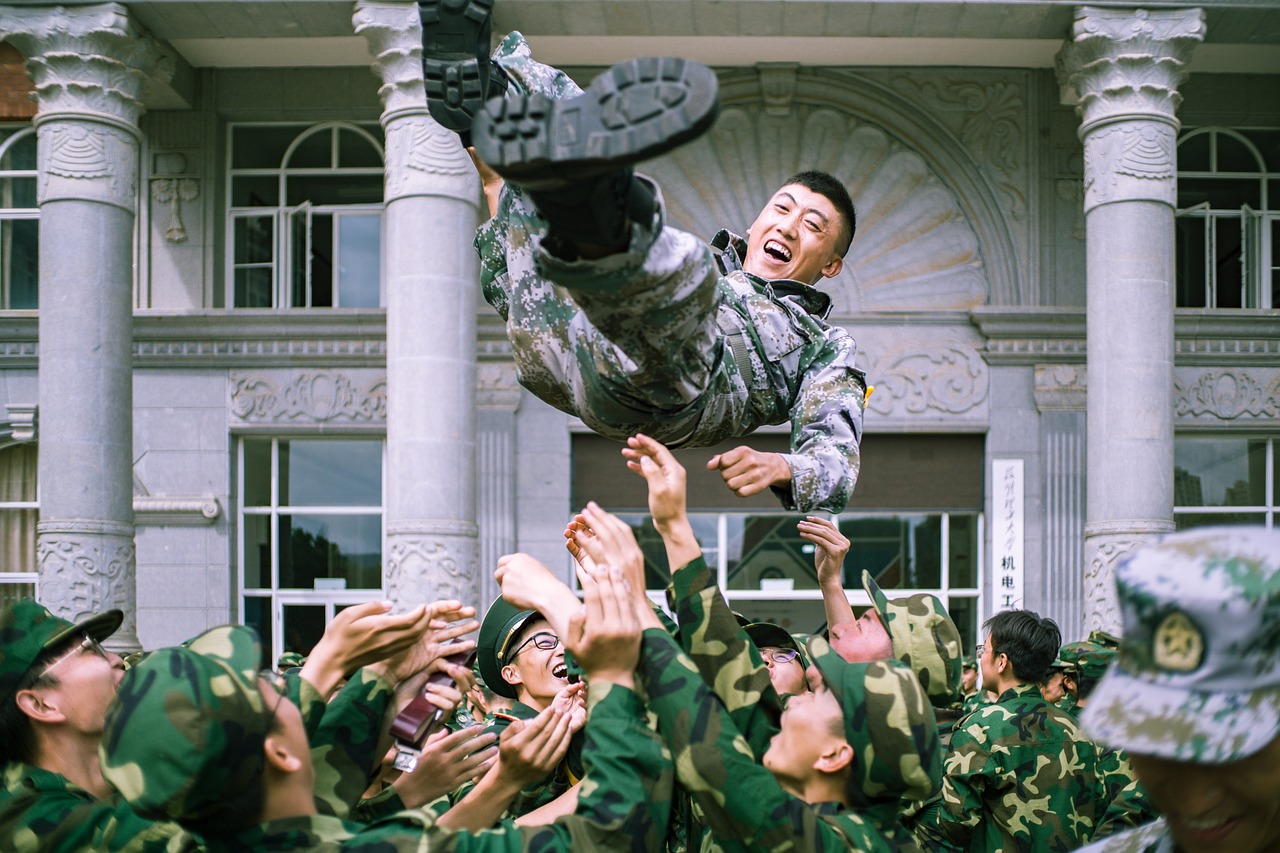
When it comes to self-defense, the physical skills you acquire are undeniably important, but what about the psychological readiness that complements those skills? This is where the role of training becomes crucial. Effective training isn't just about learning how to throw a punch or execute a perfect kick; it's also about preparing your mind for the unexpected. Imagine being in a high-pressure situation where every second counts. Your mental state can be the difference between reacting effectively and freezing in fear.
Training that incorporates psychological readiness focuses on creating a realistic environment where individuals can practice their responses to stressors. This kind of training often includes scenario-based drills that simulate real-life confrontations. For instance, participants might engage in role-playing exercises where they must respond to an aggressive attacker. This not only hones physical skills but also helps individuals build the mental fortitude needed to stay calm under pressure.
One of the most effective ways to enhance psychological readiness through training is by incorporating techniques that promote situational awareness. During training sessions, instructors can emphasize the importance of being aware of one’s surroundings and recognizing potential threats before they escalate. This proactive mindset can significantly reduce the likelihood of being caught off guard in a real-life situation.
Moreover, training should also include stress inoculation techniques. Just like athletes train under pressure to prepare for competition, self-defense training can expose individuals to controlled stressors. This could involve timed drills where participants must complete a series of tasks while under pressure. The goal is to condition the mind to handle stress more effectively, thereby improving performance during actual confrontations.
Additionally, a well-rounded training program should address the emotional aspects of self-defense. Instructors can facilitate discussions about fear, anxiety, and the psychological effects of violence. By normalizing these feelings and providing coping strategies, individuals can learn to manage their emotions better, leading to improved decision-making during critical moments.
In summary, the role of training in psychological readiness cannot be overstated. It equips individuals with the tools they need to navigate the complexities of self-defense situations. By focusing on both physical and mental preparation, training can empower individuals to respond confidently and effectively, no matter what challenges they face.
- Why is psychological readiness important in self-defense?
Psychological readiness helps individuals respond effectively under pressure, reducing the chances of panic and poor decision-making. - What types of training enhance psychological readiness?
Scenario-based training, stress inoculation techniques, and situational awareness drills are all effective methods. - How can I manage fear during a confrontation?
Techniques such as deep breathing, visualization, and mindfulness can help manage fear and anxiety in high-pressure situations.

Stress is an inevitable part of life, and its presence can dramatically affect our performance, especially in high-stakes situations like self-defense. When faced with a threat, the body enters a state of heightened alertness, often referred to as the "fight or flight" response. This physiological reaction can be beneficial in some contexts, but it can also lead to overwhelming anxiety and impaired decision-making. Have you ever found yourself unable to think straight when under pressure? That’s stress at work, and it can be a major obstacle in self-defense scenarios.
When stress levels rise, several changes occur in our body and mind. For instance, our heart rate increases, adrenaline surges, and our focus narrows. While these changes can prepare us for immediate action, they can also cloud our judgment and hinder our ability to respond effectively. Imagine trying to solve a complex puzzle while someone is shouting at you; the noise makes it difficult to concentrate, right? In self-defense situations, this can mean the difference between successfully defending oneself and making a critical mistake.
Moreover, stress can lead to physical symptoms such as muscle tension, fatigue, and even nausea. This physical discomfort can distract individuals from the task at hand, further complicating their ability to react appropriately. It’s like trying to run a race with a heavy backpack; the added weight slows you down and makes every step more challenging. Therefore, understanding how stress impacts performance is crucial for anyone looking to enhance their self-defense skills.
To effectively manage stress, individuals can employ various strategies that promote calmness and clarity. Some might find it helpful to practice deep breathing exercises before engaging in potentially stressful situations. Others may benefit from progressive muscle relaxation techniques, which involve systematically tensing and relaxing different muscle groups to alleviate tension. These methods can help reduce the physiological effects of stress, allowing for clearer thinking and better decision-making during confrontations.
Additionally, it’s essential to recognize that not all stress is detrimental. In fact, a moderate level of stress can enhance performance by sharpening focus and increasing energy levels. This is often referred to as "eustress," the positive form of stress that can motivate individuals to rise to challenges. Understanding this balance is key; too much stress can be paralyzing, while just the right amount can propel us forward.
Training plays a significant role in managing stress responses. Engaging in realistic self-defense scenarios can help individuals acclimate to the stress of unexpected confrontations. The more familiar one becomes with the sensations of stress, the better equipped they are to handle it when it truly matters. Think of it like practicing for a big performance; the more you rehearse, the less nervous you feel when it’s showtime.
In summary, stress can have a profound impact on performance in self-defense situations. By understanding its effects and implementing effective stress management techniques, individuals can improve their ability to respond appropriately in critical moments. Remember, it’s not just about physical skills; mental resilience is equally important in ensuring personal safety.
- What is the "fight or flight" response?
The "fight or flight" response is a physiological reaction that occurs in response to a perceived threat, preparing the body to either confront or flee from danger.
- How can I manage stress during self-defense training?
Practicing deep breathing, visualization techniques, and engaging in realistic training scenarios can help manage stress effectively.
- Can stress ever be beneficial?
Yes, a moderate level of stress, known as eustress, can enhance focus and performance, motivating individuals to tackle challenges head-on.

When it comes to self-defense, the ability to manage stress can be the difference between success and failure. Think about it: when you're faced with a threatening situation, your body goes into fight-or-flight mode. This physiological response can lead to a surge of adrenaline, which might help you react quickly, but it can also cloud your judgment and impair your decision-making. Therefore, developing effective stress management techniques is crucial for anyone looking to enhance their self-defense capabilities.
One of the most powerful tools in your stress management arsenal is breathing exercises. These exercises can help to calm your mind and body, allowing you to regain control in high-pressure situations. For instance, try the 4-7-8 technique: inhale through your nose for 4 seconds, hold your breath for 7 seconds, and then exhale slowly through your mouth for 8 seconds. This simple practice can help lower your heart rate and reduce feelings of anxiety, making it easier to think clearly when it matters most.
Another effective method is progressive muscle relaxation. This technique involves tensing and then relaxing different muscle groups in your body, starting from your toes and working your way up to your head. By consciously releasing tension, you can create a sense of calm and focus. It’s like giving your body a reset button, allowing you to approach stressful situations with a clearer mind.
Mindfulness is also a game-changer in managing stress. By practicing mindfulness techniques, such as meditation or simply being present in the moment, you train your brain to focus on the here and now rather than getting lost in a whirlwind of negative thoughts. This heightened awareness can be particularly beneficial during a confrontation, as it enables you to observe your surroundings and respond thoughtfully instead of reacting impulsively.
To further enhance your stress management skills, consider incorporating visualization techniques into your routine. Picture yourself successfully navigating a self-defense scenario—imagine how you would feel, what you would see, and how you would respond. This mental rehearsal can help to build your confidence and prepare you for real-life situations, effectively reducing the stress associated with uncertainty.
Here’s a quick summary of some effective stress management techniques:
- Breathing Exercises: Use techniques like the 4-7-8 method to calm your mind.
- Progressive Muscle Relaxation: Tense and relax muscle groups to release built-up stress.
- Mindfulness Practices: Stay present and aware to reduce anxiety and improve focus.
- Visualization: Mentally rehearse successful outcomes to boost confidence.
Ultimately, mastering these stress management techniques will not only enhance your self-defense skills but also empower you to face life's challenges with greater resilience. The more you practice these methods, the more instinctive they will become, allowing you to respond to stressful situations with composure and clarity.
Q: How can I start practicing mindfulness?
A: Begin with just a few minutes each day. Find a quiet space, close your eyes, and focus on your breath. Gradually increase the time as you become more comfortable.
Q: What is the best breathing exercise for immediate stress relief?
A: The 4-7-8 breathing technique is highly effective for quick stress relief. It helps calm the nervous system and can be done anywhere.
Q: How often should I practice these stress management techniques?
A: Consistency is key! Aim to practice daily, even if it's just for a few minutes, to build resilience over time.
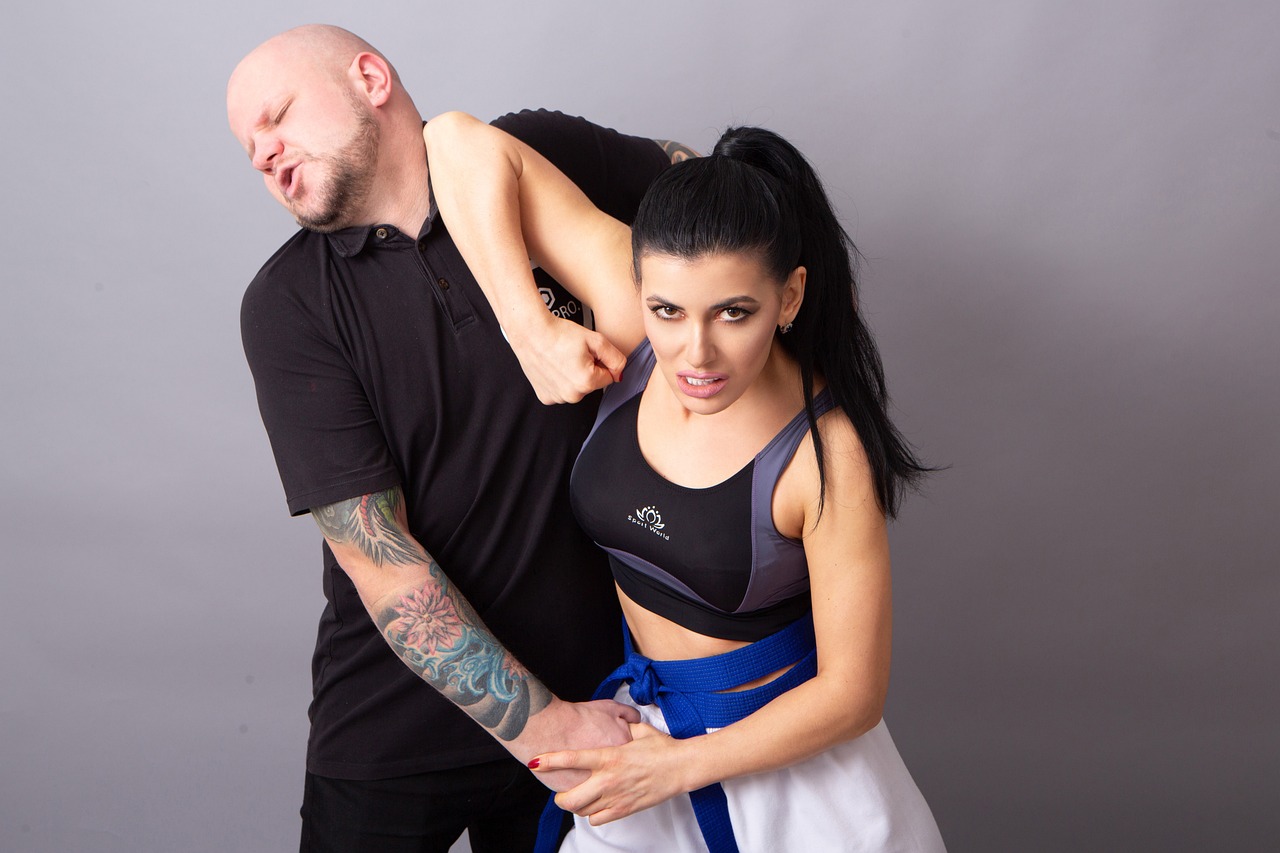
Scenario-based training is a powerful tool in the realm of self-defense, offering a multitude of benefits that go beyond mere physical skill development. One of the most significant advantages of this training method is that it immerses individuals in realistic situations that they may encounter in real life. Unlike traditional training, which often focuses on isolated techniques, scenario-based training integrates various elements of self-defense, allowing practitioners to respond to dynamic and unpredictable scenarios. This not only enhances their physical abilities but also sharpens their mental acuity, making them more prepared for actual confrontations.
When participants engage in scenario-based training, they are placed in environments that mimic real-world threats. This exposure helps them to understand the psychological stressors they might face during an actual confrontation. For instance, they might find themselves in a crowded area, confronted by an aggressor, with the added pressure of bystanders watching. This kind of training cultivates a sense of awareness and adaptability, enabling individuals to think on their feet and make quick, informed decisions under pressure.
Moreover, scenario-based training emphasizes the importance of teamwork and communication. In many self-defense situations, especially those involving multiple attackers or threats, having a partner or team can make a significant difference. Practicing with others allows individuals to develop their ability to coordinate responses, share information, and support one another effectively. This collaborative aspect not only fosters camaraderie but also builds trust among training partners, which can be crucial in high-stress situations.
Another key benefit of scenario-based training is that it helps in identifying personal strengths and weaknesses. Participants can receive immediate feedback on their performance, allowing them to recognize areas that require improvement. For example, someone may excel in striking techniques but struggle with situational awareness. By understanding these dynamics, individuals can tailor their training to address specific challenges, ultimately leading to a more well-rounded self-defense skill set.
In addition to enhancing physical and mental readiness, scenario-based training also builds confidence. When individuals successfully navigate challenging scenarios during practice, they gain a sense of accomplishment that translates into increased self-assurance. This boost in confidence can be pivotal, as it often determines how a person will react in a real-life situation. A confident individual is more likely to stand their ground and respond effectively, rather than succumbing to fear or indecision.
To summarize, the benefits of scenario-based training in self-defense are multifaceted. It prepares individuals for real-life confrontations, enhances teamwork, identifies personal strengths and weaknesses, and builds confidence. By engaging in this type of training, practitioners not only improve their physical skills but also cultivate the mental resilience necessary for effective self-defense. As the saying goes, "Practice makes perfect," and scenario-based training is a prime example of how realistic practice can lead to exceptional preparedness.
- What is scenario-based training?
Scenario-based training involves practicing self-defense techniques in realistic situations that simulate potential threats. - How does scenario-based training improve decision-making?
By exposing individuals to high-pressure situations, it enhances their ability to think critically and make quick decisions when it matters most. - Can scenario-based training be done alone?
While it is more effective with partners, some elements can be practiced solo, such as visualization and mental rehearsal. - How often should one engage in scenario-based training?
Regular practice is recommended to maintain skills and adaptability; ideally, participants should train at least once a week. - Is scenario-based training suitable for beginners?
Absolutely! Scenario-based training can be adapted to various skill levels, making it accessible for beginners while still challenging for advanced practitioners.
Frequently Asked Questions
-
What is the significance of mental preparedness in self-defense?
Mental preparedness is crucial because it determines how individuals respond when faced with a threat. When you're mentally ready, you can think clearly and react effectively, rather than being paralyzed by fear. Techniques such as visualization and mindfulness can greatly enhance your mental resilience, making you more capable of handling unexpected situations.
-
How does fear influence decision-making during self-defense situations?
Fear can cloud your judgment and lead to poor decision-making. In high-pressure moments, it may cause you to freeze or react impulsively. Understanding how fear affects your choices is essential; by learning to manage it through coping strategies like deep breathing or positive visualization, you can improve your ability to make rational decisions when it matters most.
-
What are some effective coping strategies for managing fear?
There are several strategies you can employ to cope with fear. Breathing exercises can help calm your nervous system, while visualization techniques allow you to mentally rehearse successful outcomes. Practicing these methods regularly can build your confidence and reduce anxiety, making you better prepared for real-life confrontations.
-
How can mindfulness practices aid in self-defense?
Mindfulness helps you stay present and aware, which is vital during a confrontation. By focusing on your breath and surroundings, you can maintain a calm demeanor and make informed decisions. This heightened awareness can significantly enhance your ability to respond effectively to threats.
-
What role does training play in psychological readiness?
Training is not just about physical skills; it also prepares your mind for real-life scenarios. Engaging in realistic training exercises can simulate the stress of actual confrontations, helping you to develop both your physical and psychological readiness. This comprehensive approach ensures that you're equipped to handle various situations with confidence.
-
How does stress impact performance in self-defense?
Stress can negatively affect both your mental and physical capabilities. It can lead to decreased focus, slower reaction times, and even physical fatigue. Understanding how stress impacts your performance is key; by implementing stress management techniques, you can maintain your composure and enhance your effectiveness during critical moments.
-
What are some practical stress management techniques for self-defense?
Some effective stress management techniques include deep breathing exercises, progressive muscle relaxation, and visualization. These methods can help you stay calm and focused during confrontations, allowing you to perform at your best when it counts. Regular practice of these techniques can significantly improve your overall self-defense performance.
-
Why is scenario-based training beneficial for self-defense?
Scenario-based training is beneficial because it replicates real-life stressors, providing a safe environment to practice your skills. This type of training allows you to experience the pressure of actual confrontations, helping you to develop both your physical responses and psychological readiness. By facing simulated challenges, you become more adept at handling similar situations in real life.



















